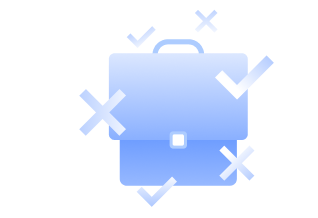Building a programmer portfolio: best practices and examples
Learn how to build a programmer portfolio with the best examples and practices and how you can make your portfolio page stand out from others

open tech jobs
When building a programmer portfolio, you need to follow the best practices and examples. While there is no shortage of open tech jobs today, the marketplace has become more competitive than ever. Before you dream about landing an interview for your desired job as a programmer, you first have to create a solid programmer portfolio to garner attention. Having a programmer portfolio gives employers direct insight into your skills, strengths, work experience, and more.
In this blog post, you’ll learn about the difference between a software engineer and programmer portfolio, steps to build an excellent programming portfolio, and essential components in a programmer portfolio, and we’ll dive into a few programmer portfolios for inspiration.
Software engineer vs programmer portfolio: what’s the difference?
A software engineer portfolio is a summary of completed work that highlights the skills and capabilities of a software engineer. You can use a sales page and a landing page to find new clients or land a job interview. It is crucial to understand that software engineering is more about making strategic design decisions than selecting technologies and considering coding requirements.
A programmer's portfolio is a basic resume. It highlights and validates the points you talk about in an interview. Instead of endlessly discussing your skills and capabilities with potential employers, a programmer portfolio gives you a chance to showcase them.
An all-in-one programmer portfolio is bound to impress employers and give you an edge over other candidates applying for the same job. The site allows programmers to display what they can do for their clients.
How to build a programming portfolio in 3 steps
One of the purposes of your programmer portfolio is to promote yourself to clients and employers. As a professional software developer, think of it as a way to communicate your self-discipline, dedication, and motivational approach to work to employers. When it comes to building and designing a portfolio, always take into account your target audience.
Step 1 – Start with About Me
When building a programming portfolio, start with a dedicated About Me section that highlights your professional experience. Use this section as an opportunity to tell your story, including what drives you and why you want to be a programmer.
Of course, foundational and required skills for a job are crucial, but employers also take into account whether you possess soft skills. Make sure to list your credentials, certifications, and educational background. In the About Me section, try to stand out from other programmers and, like your main skills, touch on soft skills.
Continue to update your About Me section to make a good first impression. Within that section, you can also mention your strengths, values, and personal interests to paint a clear picture about who you are to employers and clients.
Step 2 – Feature your previous projects
Your About Me section should be about the nature of your work, how long you have been doing it, and previous roles you have had.
Describing previous projects will help you stand out to potential employers and clients. At this stage, make sure your programmer portfolio encompasses the degree of your knowledge and expertise in coding. If you take on a new role, you should adjust your projects.
When hiring, employers mainly review previous projects of potential candidates. So, list a couple of successfully finished projects. You don’t have to include every single detail about them, just add a few screenshots of finished projects with integrated links.
Step 3 – Add your contact information
In terms of contact information, you should include your email address as well as integrated links to your social media accounts like LinkedIn, Twitter, and Facebook. You can also link to your Stack Overflow and GitHub sites where you keep your projects.
Make sure you have an attractive layout structure and design. Your design choices should reflect your personal style as a programmer. This is the main reason programming portfolios work as a dedicated contact page. For simplicity’s sake, you can also create a single-paged computer science portfolio.
5 must-haves in a programmer portfolio
Your coding profile should have more than previous work and contact information; it should show your personality, creativity, and technical mastery. Many elements are integral to a programmer’s portfolio landing page.
Here are some must-haves in your portfolio page:
1. Link to social media accounts
Social proof on a programmer’s portfolio page is integral. Linking social media profiles allows clients and employers to move the conversation to the social media space and review your communication style. You can include testimonials of satisfied clients in your programming portfolio or your linked social media profiles.
You can also add your clients’ testimonials to strengthen your claims. Ideally, you should highlight a few testimonials on the main programming portfolio page to get employers’ and clients’ attention.
2. Add extracurricular work
Adding basic skills to your programming portfolio page should not be your end goal. Instead, add details about side projects, soft skills, motivation, optimism, and unique methods you use to approach different types of projects.
3. Adjust your work samples
Add work samples that align with the job you want to secure, like Python projects for a Python programmer position. In most cases, programming portfolio pages highlight the best samples of work.
But instead of a generalized approach, update your work samples for a targeted approach. For instance, if you want to land a coding gig, add samples of your previous coding to your portfolio.
4. Get a custom domain URL
Your programming portfolio landing page reflects your personal brand. Part of the process is to get a unique domain URL that highlights your personality as a programmer. Why use a free domain when you can buy a custom domain that can become part of your unique brand? And most importantly, a custom domain URL will make you look professional to clients and employers.
5. Opt for a responsive and attractive design
In the digital age, it is crucial to have a mobile and web-responsive site. The last thing you want a potential employer to see is a slow website. If the landing page is unresponsive, potential clients and employers will move on to the next suitable applicant.
So, take some time to ensure that your portfolio landing page is fast and offers a seamless user experience on multiple devices.
Keep it simple and not too flashy in terms of visual design, structure, and layout. Opt for design elements that would appeal to all visitors. In any case, leave your options open for customizing the design and layout components.
5 programmer portfolios for inspiration
CodeTurkie
CodeTurkie's programmer portfolio is an extensive and all-in-one portfolio that highlights the skills, experience, and achievements of Philip Turkiewicz, a multi-skilled software developer. The Canadian-based frontend developer celebrates his finished projects, notes his main skills, and highlights trending topics while providing the link to his resume and contact details.
Brian Lovin
This is an old school and specific portfolio landing page designed and developed by Brian Lovin. Brian highlights his extensive career and success. Contact information is subtle, and linking to social media platforms is easy to understand.
Annie Bombanie
Annie has an attractive landing page for a developer — probably because of her background as a designer. This portfolio page gives positive vibes and shows that Annie approaches new projects with optimism. She has dedicated sections included About Me, Work Experience, Skills and Tools, Blog, Updates, and Contact Information.
Matthew Williams
This is one of the most dynamic programmer profiles you can find online. It is a compact view of the life, work experience, and ambitious drive of a full-stack web developer. Everything comes across as highly professional, from the About Me page to blog posts to the work experience page.
Delba
Delba has a relatively simple developer programming portfolio that highlights her career path, basic information, and what she can do for clients. It also links to Twitter and her posts and videos.
Final thoughts
If you’re on the hunt for a programming job, having a portfolio is crucial. Building a programmer portfolio helps you stand out in a competitive job marketplace. Creating a solid programmer portfolio requires time and effort.
It is important to showcase a couple of work samples. Publishing the right programmer portfolio can do wonders for your career. Think of the portfolio site as a way to steer your career in the right direction and attract a diverse range of clients.
Having a portfolio gives you a chance to showcase your skills and demonstrate your experience through samples. You can make your portfolio part of your brand and use it as a hub to try out new development tools and tactics.


_(1).png)
.png)